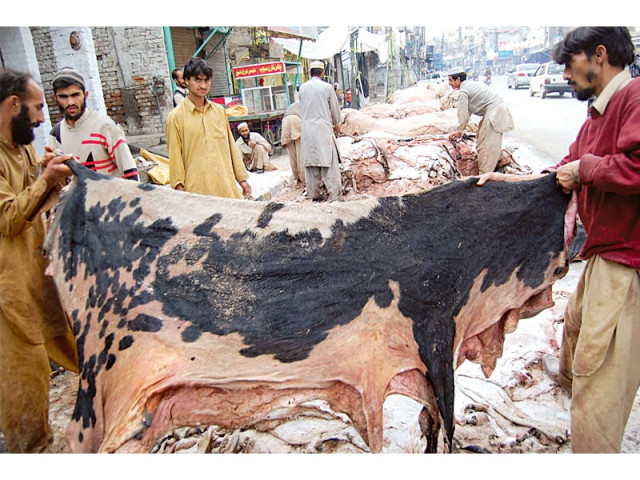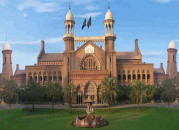Sacrificial animals escape affordability
Sharp increase in the costs of cattle, goats has forced low-income citizens to contribute towards shared sacrifice

Apart from their religious significance, sacrificial animals contribute a great deal to the festive ambiance of Eid-ul-Azha, especially for households with children, who excitedly look forward to welcoming their pure, albeit fleeting, friends come the arrival of the holiday season. This year however, sky-rocketing sacrificial costs naturally mean that many households will neither be able to fulfil their yearly obligation nor put a smile on their little ones faces.
One such dispirited family was that of Shahid Aslam, who had been searching for an affordable animal since hours at the Shahpur Kanjran Mandi. “I have roamed around the whole market and every other trader is asking for a price much higher than last year. When we object to the high price, their only response is that everything has become expensive,” lamented Aslam.
“Last year, we were able to buy a decent sized goat, with up to 30 kilograms of meat for Rs55,000. This time around, it has cost us Rs58,000 for a small goat, which weighs only 25 kilograms,” shared Bushra Bibi, who had visited the cattle market with her delighted children.
According to sources of The Express Tribune, despite the presence of millions of sacrificial animals for sale at the Shahpur Kanjran Cattle Market and Sagiyan Pul Mandi of Lahore, the number of buyers has decreased drastically this year. This can be explained by the rising costs of sacrificial animals, like goats, bulls and camel, which are being sold are prices 25 to 110 per cent higher than the previous year’s rates. For instance, goats sold earlier for Rs35,000 to Rs70,000, now cost anywhere between Rs60,000 to Rs200,000. Similarly, a medium weight bull usually costing Rs150,000, is now sold for Rs300,000 while the price of a camel has reached Rs500,000.
Some unique sacrificial animals have also been brought to the markets, which despite being the cynosure of all eyes due to their extraordinary built and weight, have not been purchased by buyers yet, who are unwilling to pay a huge sum of Rs700,000 to Rs20,00,000 for one animal. To add to the worries of locals on the occasion of Eid-ul-Azha, butchers too have fixed their exorbitant rates for slaughtering animals, with Day 1 charges for goats ranging between Rs6,000 to Rs7,000 before dropping to Rs4,000 and Rs5,000 on the subsequent days. Similarly, cattle sacrifice costs fall between Rs25,000 to Rs30,000 whereas those of camel’s fall anywhere between Rs40,000 to Rs50,000.
As a result, the majority of people are hoping to contribute to the sacrifice of big animals like cattle or camel, which as per Islamic rulings, constitute seven parts of sacrifice. Various madrassas and mosque committees are assisting locals in this regard by charging Rs20,000 to Rs35,000 each for a share in the sacrifice of a big animal.
Addressing their side of the story, Allah Dutta, a cattle trader from Bahawalnagar felt that it was only natural for cattle prices to increase given the current rate of inflation. “Why do people from urban areas think that there is no inflation in the villages. Electricity, petrol, diesel, and fodder, all have become expensive. Therefore, we have to set our rates higher this year,” defended Dutta, while speaking to The Express Tribune.



















COMMENTS
Comments are moderated and generally will be posted if they are on-topic and not abusive.
For more information, please see our Comments FAQ